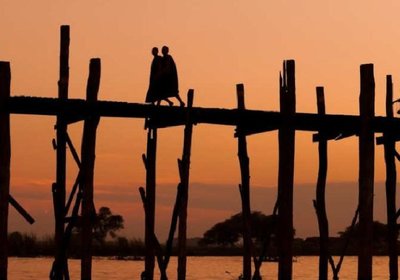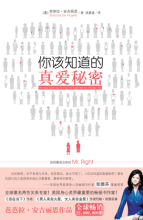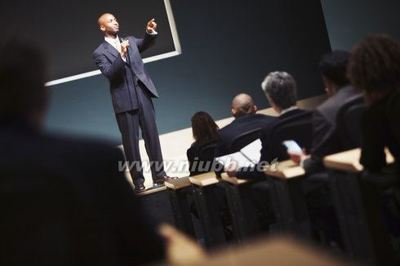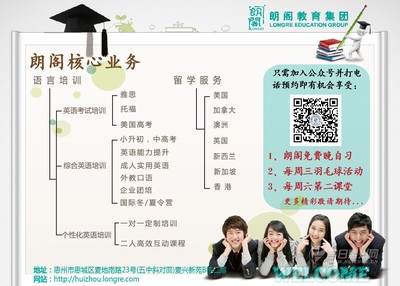“缅甸之春”带来的艰难选择
作者:吴佐泰(U ZawHtay)
缅甸总统府办公室主任,也是缅甸政治分析家,作家
时间:2014年8月25日 张景璐译
日出中的乌本桥(缅甸曼德勒)
美国总统奥巴马2012年访问缅甸,为缅甸这个徘徊于中国、印度和东南亚大陆十字路口的国家带去了希望。缅甸总统吴登盛2013年访问白宫,他是自1966年以来的首位总统正式访问美国,也代表着美国这个宣扬民主的国家认可了吴登盛发起的“缅甸之春”。但是美缅关系在奥巴马第二任期中看似没有任何改善。对于缅甸来说,美国强有力的支持对于缅甸向民主国家的转型至关重要。
“缅甸之春”的主要挑战
总统吴登盛仍在致力于在未来几个月达成全国范围的停火,当然要完成这一目标还有很多要做。吴登盛的改革自2011年以来已经极大的改善了缅甸人权状况。缅甸迅速扩大了报道自由、言论自由以及其他民权,大部分政治犯得以释放,对于国际劳动标准的公共意识有所增强,警察也接受了国际最佳训练。目前,吴登盛加速了“第三波”改革进程,进行了以人员为中心的改革,包括在通信部和卫生部进行的内阁重组,为国家处理紧急问题注入新的血液。
土地问题在全国引发了很多抗议活动,但是国外观察家必须理解,大部分有争议的土地都是在新政府成立之前被征用没收的。总统吴登盛为此组建了一个委员会,由副总统年吞(NyanTun)担任领导,来处理土地问题。目前该委员会已经处理了882个案件,将500,000多英亩的土地还给农民。在这次的土地纠纷中,新政府和军队不再是问题的制造者,而是问题的解决者。
缅甸的转型在媒体改革和公民社会等领域还面临很多严峻的挑战。政府正试图在权利与责任之间寻求平衡,鼓励道德报道、专业报道。例如联合日报的记者被法庭判刑入狱,并不是因为他们对新闻的报道,而是因为他们侵犯了国家机密,非法入侵限制区。任何国家都不会允许未经授权的公民,包括记者,非法入侵涉及国家安全的区域。
国家当然确保这些记者走正当法律程序,并给与公正的判决。总统吴登盛今日会见了缅甸临时新闻出版管理议会(MyanmarInterim PressCouncil),并保证他会在他的 权力范围内确保记者的合法权益。他还说,临时议会(PressCouncil)可以在记者与政府之间扮演协调者的角色,解决道德争端。
目前的政治转型还引发了不可预计的社会冲突,特别是缅甸高度多样化的人口因宗教、民族差异而产生的冲突。社会中存在的根生地固的、极其复杂的民族宗教偏见必须依托教育、法律法规等全面的手段来摒除。针对最近在曼德勒爆发的社区暴力冲突,总统吴登盛鼓励宗教和社区组织团结一心,阻止新的暴力冲突事件,并承诺政府会对挑起冲突的人员采取措施。总统还要求政府必须制定一套全面的策略,通过教育、经济手段、高效的监督管制来根除社区冲突。
吴登盛总统目前面临4个主要的政治挑战,这些挑战可能会决定“缅甸之春”未来的道路。
第一,达成全国停火协议,终止世界上持续时间最长的国家内战。
第二,争取对2008年宪法的改革,目前正在新议会上讨论改革方案。
第三,今年年末实行自由、公正的补选。
第四,2015年的大选,2015年是改革至关重要的第二阶段。
缅甸的政局还不稳定,人民非常关心国家能否克服、如何克服不同政党之间的差异。
我们能从政治理论中学到什么?
许多著名政治专家提供了多种研究国家从专制到民主转型的方案。飞利浦·施密特(PhillipeSchmitter)和卡斯顿·施耐德(CarstenSchneider)在2004年提出了一个假设,国家转型通常会经历三个阶段——革命期,转型期以及巩固期,但并不是所有的转型都按照这一顺序,他们发现国家民主化会向着4个基本方向发展:
非常成功:在86个转型国家中,只有17个国家成功的向民主转型。
倒退浪潮:很多专制政权在寻求民主转型时,遇到致命的强烈抵制,不得不扭转转型方向。
起义暴动:几乎一半的转型国家处于政治不稳定、人民暴动、冲突频发的痛苦时期。
停滞不前:86个国家中,24个国家在开始民主改革时,能够幸免人民的强烈抵制,但数十年过去了,她们仍然没有进入巩固期。
美国国家民主基金会(National Endowment for Democracy)的布莱恩·约瑟夫(BrianJoseph)认为,民主改革就是通往不确定的道路。任何人都无法预计哪个国家的转型可以成功,尤其是民族宗教复杂多样的小国家,例如缅甸,就更加无法确定。研究缅甸改革的学者提出了多种不同的模式。
例如斯坦福大学的弗朗西斯·福山(FrancisFukuyama)将缅甸改革与蒙古改革进行了对比。他意识到国家上层建筑必须建立在法律法规和社会动员的基础上,这样才能有坚实的民主基础。他警示,改革初期,人民的抗议抵制会把整个国家带入错误的发展方向。不幸的是,缅甸没能避免人民的抵制。福山(Fukuyama)建议,在这样一个转型时期,缅甸更加需要“伯克莱邦”之称的经济师——就像他们在印度尼西亚做的那样,而不需要政治激进分子。他认为蒙古模式可能最适用于缅甸,通过强有力的经济发展,从选举民主转变为成熟民主。
转型民主理论家拉里·戴蒙得(LarryDiamond)建议在政府与反对党之间建立一个“共同安全体制”(system of mutualsecurity),以南非为例,前总统弗雷德里克·威廉·德克勒克(F.W. deKlerk)1994年就出任了新总统曼德拉(NelsonMandela)的第二副总统(戴克拉克担任总统后,改变南非国民党政策,以民主改革方式与以黑人为主的非洲人国民大会协商,同时促进南非共产党合法化,并且释放曼德拉)。戴蒙得(Diamond)认为这样的政治转型公约可以帮助缅甸取得民主转型的成功。
他还建议缅甸的选举制度应从现在的“简单多数制”(first-past-the-postsystem)(得票最多者当选)转变为“比例代表制”(proportional representationsystem),通过过双方的协商进行改革,确保缅甸的转型之路向着持续稳定的民主制前进。
美国国家民主基金会的约瑟夫(Joseph)在2012年的一篇文章中提出了缅甸未来发展的4种可能:
以对话为基础的转型:就像印度尼西亚前总统苏咍托(Suharto)将军下台之后,他掌管的武装部队承诺逐步退出,但是反对党允许其参与印尼转型。在这种情形下,2015年的大选将是缅甸以对话为基础的转型中非常重要的一步。
U型逆转:当政治改革造成社会环境不安定时,例如,当局领导身体不适,行政机构与立法机构之间发生冲突,社区冲突或示威游行无法控制(就像泰国目前的示威)时,军队就会有危机感。
以经济发展为导向:正如在该区域的一些经济崛起国,政府和反对派领导人在着重经济发展的同时,也逐渐实现人权、民主、自由。只有双方达成一致,都意识到经济发展的重要性时,这种情况才会出现。
国家统一遭到破坏:一旦军队或在野党发生分裂,就会对国家的转型造成负面的影响。在改革势头发展良好的时候,反对派需要放松对政府的压力。如果民族冲突没有及时解决,或者反对派给政府的宪法改革施加过大的压力,那么就有可能引起军事僵局。结果自然是每个人都会遭受损失。
制定正确的战略决策
缅甸必须努力维持稳定与自由之间的平衡,以避免类似在埃及爆发的强烈抵制。政治改革应当包括2008年宪法改革,由政府与反对党协商进行,还包括全国停火协议达成后,吴登盛总统组织一场全国性的政治对话。
这次对话不仅包含四位主要人物:吴登盛总统,下议院发言人杜拉·瑞曼(Shwe Mann),民盟领袖昂山素季,和敏昂莱将军(MinAung Hlaing),还应包含来自全国的各民族领导人、其他政党和公民。这次对话代表着总统吴登盛的实际承诺,还是确保改革成功的最佳政治渠道。
吴登盛总统和敏昂莱将军公布了政府军队从政治领域逐步退出的计划。彻底退出的具体时间取决于少数民族武装部队能否解散。
但是,如果反对党在2015年大选中获得多数席位,民族冲突就会重新爆发。
在缅甸这个关键的历史时期,国际社会包括美国,需要制定正确的战略决策。
如果该决策只达成短期目标,就不需要进行调整。但是如果该策略旨在推动缅甸长期的改革,那么就需要以长远的眼光着手调整。
调整战略自然是困难的,但是如果国际社会希望确保缅甸——这个处于21世纪民主改革前沿的其中一个国家,能够持续进行民主改革,那么调整战略就非常必要。
(英文原文附下)
Hard Choices Posed by the“Myanmar Spring”
by cogitASIA Staff • August 25,2014
By U Zaw Htay
Sunriseat U-Bein Bridge in Mandalay,Myanmar.

U.S. president Barack Obama’shistoric visit to Myanmar in 2012 brought hope to the people ofthis country, which sits at the crossroads of China, India, andmainland Southeast Asia. President Thein Sein’s return visit to theWhite House in 2013 was the first official visit by a Myanmarleader since 1966 and represented an endorsement by the UnitedStates of the “Myanmar spring” he had initiated, based ondemocratic values the United States has promoted worldwide. ButU.S.-Myanmar relations appear to have stalled somewhat duringObama’s second term. This is a matter of great concern toMyanmar, because strong U.S. support will be vital to the country’ssuccessful transition to democracy.
Key Challenges of the “MyanmarSpring”
Although much remains to be done, PresidentThein Sein continues his effort to conclude a nationwide ceasefirein the coming months. His reforms have produced landmarkimprovements in human rights since 2011. Press freedom, freedom ofspeech, and other civil liberties have expanded rapidly, mostpolitical prisoners have been released, public awareness ofinternational labor standards has increased, and police are beingtrained in international best practices. Most recently, PresidentThein Sein has accelerated his “third wave” reform process bymaking some peoplecentered changes, including a cabinet reshufflein the ministries of Information and Health, to bring a new visionto some of the country’s most urgent problems.
Land problems are raising loud protests around the country,but external observers must understand that most of the land beingdisputed was confiscated before the new government came intooffice. President Thein Sein has organized a committeeheaded by Vice President Nyan Tun to tackle these land problems,and this committee has already solved 882 cases, transferring over500,000 acres back to farmers around the country. In theseland disputes, the new government and today’s army are not theproblem makers, but rather problem solvers.
Myanmar’stransition faces another serious challenge in the area of mediareforms and civil society, where the government is seeking thecorrect balance between rights and responsibilities to encourageethical reporting and professionalism. The Unity Journalreporters, for example, were sentenced by the court to prison termsnot for their reporting, but for violating state secrets andtrespassing into a restricted area. No country allowsunauthorized civilians, including reporters, to trespass in areasof national security.
The journalists were nevertheless guaranteed the right of dueprocess and a fair trial, and the president, in a recentmeeting with the Myanmar Interim Press Council, gave assurancesthat he will protect these rights within the limits of hisauthority. He also said that, as an alternative to legalaction, the council could play a mediating role between journalistsand government in resolving ethical disputes.
This period of political transition has given rise to unanticipatedsocial conflict stemming from religious and ethnic differences inMyanmar’s highly diverse population. These are deep-seated, complexprejudices within society that must be addressed with comprehensivemeasures based on education and the rule of law. In response to therecent outbreak of communal violence in Mandalay, PresidentTheinSein applauded the religious and community organizations thatbanded together to prevent further violence and promised that thegovernment would take action against those who instigated theviolence. The president has asked the government to developa comprehensive strategy for addressing the roots of communalviolence through education, economic measures, and effectivepolicing.
President Thein Sein is now facing four key political challengesthat will determine the future course of the Myanmar spring.
The first is achieving a nationwide ceasefire agreement toend the world’s longest civil war.
The second is the struggle to reform the 2008constitution, which is playing out on the floor of the newparliament.
The third is the implementation of free and fairby-elections later this year.
And last are the 2015 elections, which will usherin the critical second phase of the reforms.
The political environment in Myanmar is uncertain and people areconcerned about whether and how the country will overcome itsvarious political divisions.
What Can We Learn from Political Theory?
Noted political scientists have providedvarious formulas for analyzing the transition of countries fromauthoritarian rule to democracy. Phillipe Schmitter and CarstenSchneider postulated in 2004 that countries tend to go throughthree stages – liberalization, transition, and consolidation – butthat not all transitions are linear movements. They foundthat democratization can take four basic directions:
Outstanding: Of some 86 countries in transition,only 17 percent can be considered successful transitions todemocracy.
Back Wave: Many of the authoritarian regimesseeking democratic change encountered fatal backlashes and wereforced to make u-turns.
Uprising: Nearly half of those transitioning todemocracy fell prey to political instability, popular uprisings,and civil conflict.
Status quo: Some 24 of the 86 countries intransition were able to avoid political backlash once democraticchanges had been initiated, but after decades they still had notreached the stage of consolidation.
As Brian Joseph of the National Endowment for Democracy argues,democratic transition is a road to uncertainty. No one can predictwhich transition will succeed, especially in a small country withgreat diversity and complicated roots such as Myanmar. Scholarsstudying Myanmar’s transition have come up with variousmodels.
Stanford University’s Francis Fukuyama, for example, has comparedMyanmar’s transition with Mongolia’s transition to democracy. Whileacknowledging that statebuilding must be based on the rule of lawand social mobilization to achieve a democratic foundation, hewarns that in the early phases, the rise of nationalism can pull acountry in the wrong direction. Unfortunately, Myanmar has not beenable to avoid a wave of nationalism. Fukuyama recommendsthat, at this stage of transition, Myanmarneeds a “Berkeley mafia” of economists – like those who builtIndonesia – more than it needs political activists.He argues that Mongolia may be the best model for Myanmar toprogress from an electoral democracy to a mature democracy throughstrong economic development.
Transitional democracy theorist Larry Diamond hasrecommended a “system of mutual security” between the governmentand its opponents, citing the example of South Africa, where formerpresident F.W. de Klerk assumed the position of deputy presidentunder the new President Nelson Mandela in 1994. Diamondbelieves this kind of political transition pact would help Myanmarto become a successful democracy.
He also suggestedthat Myanmar’s electoral system should be changed from its currentfirst-past-the-post system to a proportional representation systemthrough negotiations between moderates from both sides to assistthe journey to a sustainable democracy.
In a 2012 article, Joseph of the National Endowment forDemocracy posed four possible futures for Myanmar:
Transition based on dialogue: Like with Indonesia’stransitionafter the fall of President Suharto, the armed forcescommit to a gradual exit strategy, while opponents accept militaryparticipation during a transitional period. In this scenario, the2015 elections will be an important step in Myanmar’s transitionbased on dialogue.
U-turn: The military feels threatened whenpolitical change gives rise to unanticipated circumstances such asfailing health of current leaders, a serious clash between theexecutive and legislative branches, uncontrollable communalviolence, or popular street protests such as occurred recently inneighboring Thailand.
Economic growth orientation: Like in some of theregion’s emerging economic power houses, the government andopposition leaders focus on economic growth, with gradualliberalization of freedom and civil rights. Only when both sidesrecognize the need for rapid economic development can this scenariobe realized.
Collapse of national unity: If either the militaryor the political opposition collapses, it will have a negativeimpact on the transition. As the momentum of reform speeds up, theopposition will need to relax some pressure. If ethnic conflictscannot be resolved or the opposition presses too strongly forconstitutional reform, a standoff with the military may develop. Asa result, everyone loses.
Making the Right Strategic Choice
Myanmar must strike the right balancebetween stability and freedom to avoid the kind of backlashexperienced in Egypt. The political transition shouldinclude negotiated reform of the 2008 constitution between thegovernment and the opposition, along with the steps President TheinSein is taking to set up an allinclusive political dialogue after anationwide ceasefire agreement is concluded.
This dialogue will include notonly the “big four” (President Thein Sein,parliamentary speakerShwe Mann, National League for Democracy leader Aung SanSuu Kyi,and Commander-in Chief Min Aung Hlaing) but also the ethnicleaders, political parties, and civil society from all parts of thecountry. This move represents a concrete commitment fromPresident Thein Sein and the best political course to guaranteesuccess for the reforms.
President Thein Sein andCommander-in-Chief Min Aung Hlaing have revealed a gradual exitstrategy for the military from the political field. Their timeframefor a complete exit is based on the prospect that armed ethnicgroups would be disbanded throughout the country.
But if the opposition parties win a majority of parliamentary seatsin the 2015 elections, ethnic conflict may return to thecountry.
The international community, includingthe United States, needs to make the right strategic choice at thishistoric juncture in Myanmar.
If it is focused onlyon short-term goals, it doesn’t need to adjust its calculations.However, if it wants to promote along-term transition in Myanmar, it will need to start adjustingits policies with an eye focused beyond 2015.
Thismay be difficult, but it is essential if the internationalcommunity wishes to ensure sustainable democracy in one ofthe most important frontiers of democratic transition in the 21stcentury.
-Mr. U Zaw Htay is director of thePresident’s Office in Naypyitaw, Myanmar, and a political analystand writer on Myanmar politics.
 爱华网
爱华网



